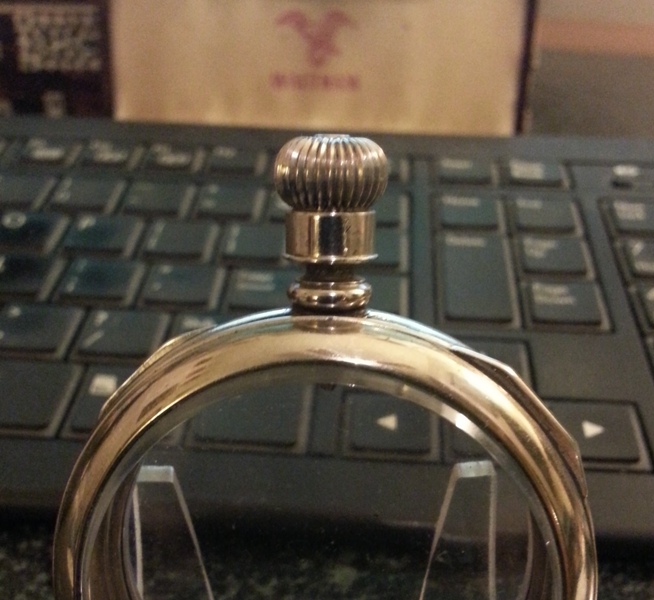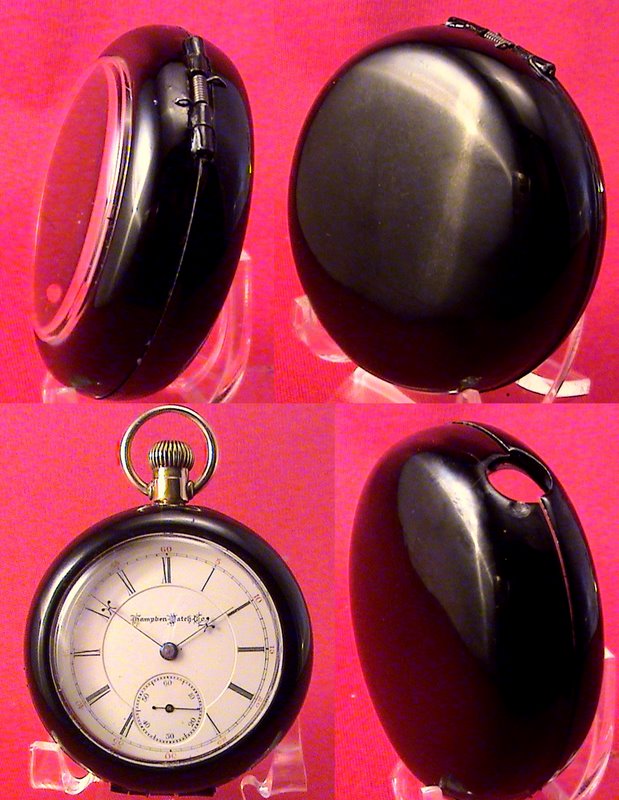
| WWT Shows | CLICK TO: Join and Support Internet Horology Club 185™ | IHC185™ Forums |

|
• Check Out Our... • • TWO Book Offer! • |
Welcome Aboard IHC185™  Internet Horology Club 185
Internet Horology Club 185  IHC185™ Discussion Site Main Page
IHC185™ Discussion Site Main Page  Horological Discussions, Questions and Answers
Horological Discussions, Questions and Answers  Pocket Watch Discussions
Pocket Watch Discussions  18S Display Case - what is the purpose of the groove in the neck?
18S Display Case - what is the purpose of the groove in the neck?
 Internet Horology Club 185
Internet Horology Club 185  IHC185™ Discussion Site Main Page
IHC185™ Discussion Site Main Page  Horological Discussions, Questions and Answers
Horological Discussions, Questions and Answers  Pocket Watch Discussions
Pocket Watch Discussions  18S Display Case - what is the purpose of the groove in the neck?
18S Display Case - what is the purpose of the groove in the neck?Go  | New Topic  | Find-Or-Search  | Notify  | Tools  | Reply to Post  |  |
| IHC Member 1736 |
Bought and received this display case from on of our colleagues here. It is very nice. But the purpose of the groove in the neck eludes me. Did these hang on a forked hook? Did they have some sort of clamp on bow? Were they mounted in some fashion so they could be rotated for display? Every thing has a place, every place has a thing... this place is missing it's thing!  | ||
|
| IHC Member 1291 |
I believe that's just part of the design[s] concept on all of the tall pendant cases. Most had to be "meatier" above the thinnest diameter or "groove" part in order to allow for the "ears" or holes to be drilled for the bow, even though ones like this one weren't designed for a bow. I believe having the same diameter from the base to the top would not be quite as appealing to the eye as in the "hourglass effect". Like a women's waist/figure, the eye picks up the curves !! Even if they had of been made the same thick diameter from base to the top, they would still need to have the internal smaller diameter "shaft", guide/groove in order to help keep and align the stem straight. Along with a thicker section above the groove for a bow to attach to, without a bow as in this case, you still needed the thicker diameter to allow for a possible sleeve to function and operate and/or the screw down dust cover that some cases had. Design, eye-appeal, and functionality can be sighted as to why a "groove" IMHO. All in all I believe it was an acceptable design/industry standard adaption that worked sufficiently on 95-98% of the movements to be cased. regards, bb | |||
|
| IHC Life Member |
The "aftermarket" made very good thin flannel-lined 'clamshells' to fit that deep groove and help protect the early Pillar Plate movements from sharp temperature variations . . .  | |||
|
| IHC Member 1610 |
I agree with Buster. If will notice most high pendant cases have a grove of one sort or another. Harry | |||
|
| IHC Member 1335 |
I believe it is designed to be clipped onto an early fighter plane dash in a spring loaded type of bracket | |||
|
| IHC Member 1736 |
Cool, another hobby... vintage fighter planes. | |||
|
| Powered by Social Strata |
| Your request is being processed... |
|
Welcome Aboard IHC185™  Internet Horology Club 185
Internet Horology Club 185  IHC185™ Discussion Site Main Page
IHC185™ Discussion Site Main Page  Horological Discussions, Questions and Answers
Horological Discussions, Questions and Answers  Pocket Watch Discussions
Pocket Watch Discussions  18S Display Case - what is the purpose of the groove in the neck?
18S Display Case - what is the purpose of the groove in the neck?
 Internet Horology Club 185
Internet Horology Club 185  IHC185™ Discussion Site Main Page
IHC185™ Discussion Site Main Page  Horological Discussions, Questions and Answers
Horological Discussions, Questions and Answers  Pocket Watch Discussions
Pocket Watch Discussions  18S Display Case - what is the purpose of the groove in the neck?
18S Display Case - what is the purpose of the groove in the neck?©2002-2025 Internet Horology Club 185™ - Lindell V. Riddle President - All Rights Reserved Worldwide

